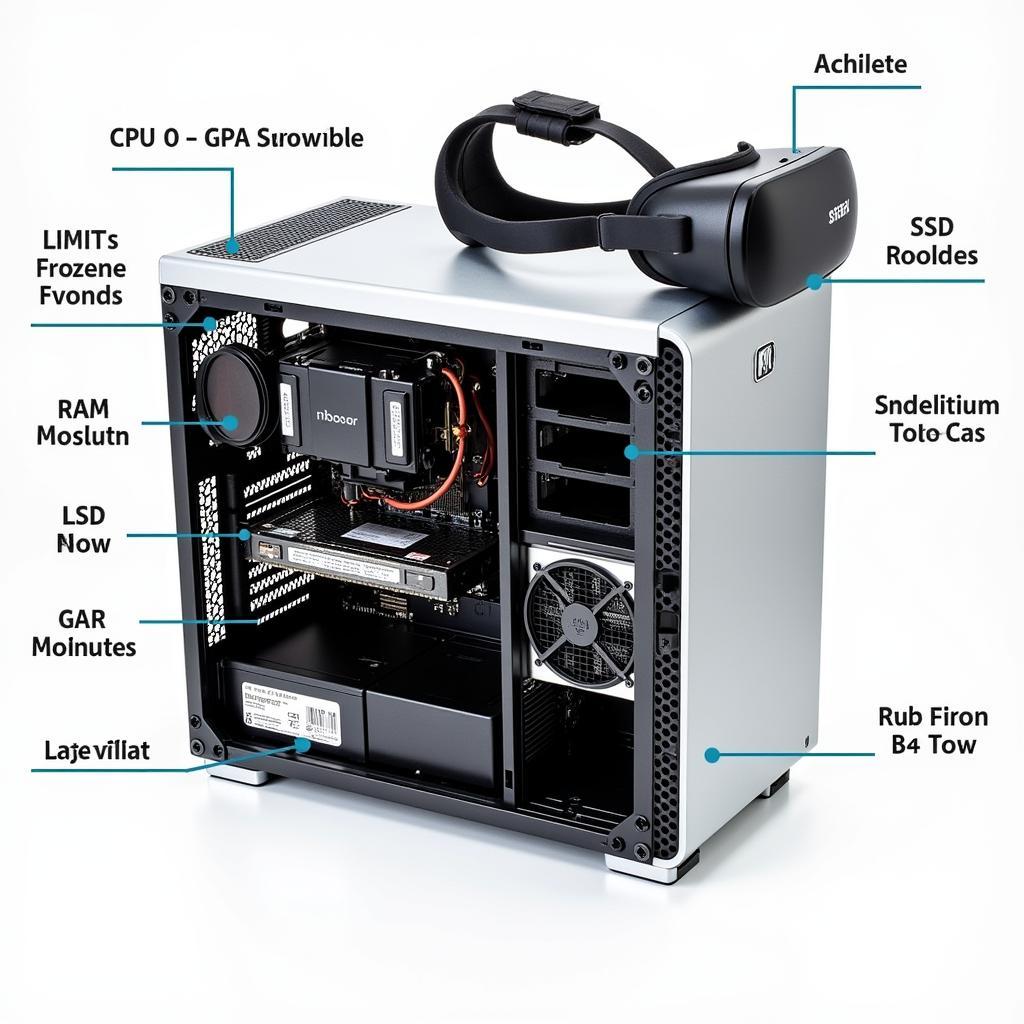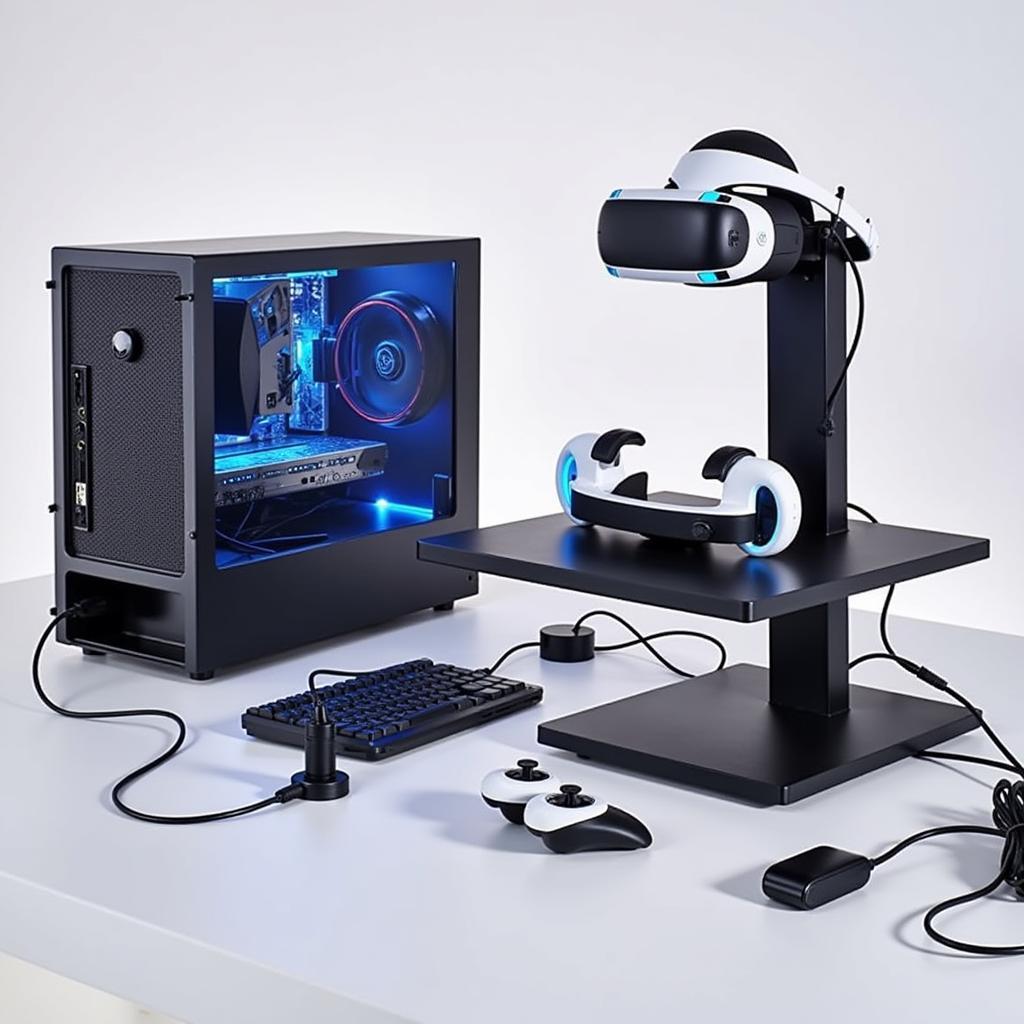Pc Vr Test is crucial for ensuring a smooth and immersive virtual reality experience. From hardware compatibility checks to performance benchmarks, understanding how to properly test your PC’s VR readiness can make all the difference between a seamless dive into digital worlds and a frustrating struggle with lag and glitches. Let’s explore the essential aspects of PC VR testing and equip you with the knowledge to optimize your setup for peak performance. We’ll cover everything from system requirements and testing software to troubleshooting common issues. Ready to jump in?
Understanding the Importance of PC VR Test
Before diving into the how-to’s, it’s essential to understand why PC VR testing is so important. Unlike traditional gaming, VR demands significantly more from your system. A thorough PC VR test identifies potential bottlenecks before you even put on the headset, preventing motion sickness, graphical glitches, and overall performance issues that can ruin your VR experience. It also lets you know if your current rig can handle the demands of your favorite VR games or if an upgrade might be in order. Check out our resources on pc ii for more insights.
Key Components of a PC VR Test
A comprehensive PC VR test evaluates several key components of your system. These include your GPU, CPU, RAM, storage speed, and USB ports. Let’s break down each element:
-
GPU (Graphics Processing Unit): The powerhouse of VR visuals, your GPU renders the immersive environments you see. A powerful GPU is crucial for high frame rates and smooth gameplay.
-
CPU (Central Processing Unit): The brain of your system, the CPU handles complex calculations and game logic. A capable CPU ensures responsive tracking and prevents performance hiccups.
-
RAM (Random Access Memory): VR games require ample RAM to store and quickly access game data. Sufficient RAM prevents stuttering and loading delays.
-
Storage Speed: Fast storage, particularly an SSD, minimizes loading times and ensures quick access to game assets, creating a more seamless VR experience.
-
USB Ports: VR headsets rely on high-bandwidth USB ports for communication with your PC. Ensuring you have the correct USB port type and bandwidth is vital for a stable connection.
 PC VR Test: Essential Hardware Components
PC VR Test: Essential Hardware Components
Popular PC VR Test Software and Tools
Several excellent tools are available to help you conduct a thorough PC VR test. These tools analyze your hardware and provide a detailed report on your system’s VR readiness. Here are a few popular options:
-
SteamVR Performance Test: Developed by Valve, this free tool analyzes your system and provides a VR performance score, indicating whether your PC is ready for VR gaming.
-
Oculus Rift Compatibility Check: Specifically designed for Oculus Rift headsets, this tool checks your system’s compatibility with Oculus hardware and software.
-
VRMark: A comprehensive benchmarking tool that tests your system’s VR capabilities and provides a detailed performance analysis.
Troubleshooting Common PC VR Test Issues
Encountering problems during your PC VR test? Here are some common issues and troubleshooting steps:
-
Low Frame Rate: Upgrade your GPU drivers, close background applications, or lower the in-game graphics settings.
-
Tracking Issues: Ensure your sensors are properly positioned and calibrated, and check for any obstructions in the tracking area. Consider ovr tournament schedule 2024 for optimal performance insights.
-
Motion Sickness: Adjust the in-game comfort settings, take breaks frequently, and ensure proper ventilation in your play area.
Optimizing Your PC for VR
Beyond passing the PC VR test, several steps can further enhance your VR experience:
-
Close Background Applications: Free up system resources by closing unnecessary programs running in the background.
-
Update Drivers: Ensure your graphics drivers are up-to-date for optimal performance. Check out information on pcweb for relevant updates.
-
Adjust In-Game Settings: Optimize game graphics settings to balance visual fidelity with smooth performance.
Conclusion
PC VR test is a vital step towards enjoying a truly immersive and comfortable virtual reality experience. By understanding the key components, utilizing testing software, and implementing troubleshooting tips, you can conquer virtual worlds with confidence. Don’t forget to perform regular PC VR tests to maintain peak performance and stay ahead of any potential issues. Now you’re well-equipped to ensure a smooth VR journey. PC VR test allows you to fully immerse yourself in the breathtaking experiences virtual reality offers.
FAQ
- What are the minimum system requirements for VR? Minimum requirements vary depending on the headset and games, but generally include a powerful GPU, a capable CPU, sufficient RAM, and compatible USB ports.
- How often should I conduct a PC VR test? It’s recommended to test your system periodically, especially before playing a new VR game or after making hardware or software changes.
- What is the best PC VR test software? Several excellent options are available, including the SteamVR Performance Test, Oculus Rift Compatibility Check, and VRMark.
- Can I run VR on a laptop? Some laptops are VR-ready, but it’s essential to check the system requirements for your specific headset and games. Learn more about the comparison between iracing openvr vs openxr on our website.
- What should I do if I experience motion sickness in VR? Adjust in-game comfort settings, take breaks frequently, and ensure proper ventilation.
- How can I improve my VR performance? Close background applications, update drivers, and optimize in-game settings.
- Where can I find more information on VR accessories like the vr wheel? You can explore our dedicated page for in-depth information.
 Optimized VR Setup for Enhanced Performance
Optimized VR Setup for Enhanced Performance
Common Scenarios and Questions:
- Scenario: My PC VR test shows a low score. Question: What upgrades should I prioritize to improve my VR performance?
- Scenario: I’m experiencing tracking issues with my VR headset. Question: How can I troubleshoot and fix these tracking problems?
- Scenario: I’m new to VR and unsure how to conduct a PC VR test. Question: Where can I find a step-by-step guide for beginners?
Further Exploration on VNG Game:
Explore more articles and resources on PC VR and other gaming topics on our website. Search for “VR performance optimization” or “VR troubleshooting” for further assistance.
Need Support?
For any assistance or inquiries, feel free to contact us: Phone: 0902476650, Email: [email protected] or visit us at 139 Đ. Võ Văn Kiệt, Hoà Long, Bà Rịa, Bà Rịa – Vũng Tàu, Việt Nam. Our customer support team is available 24/7.





